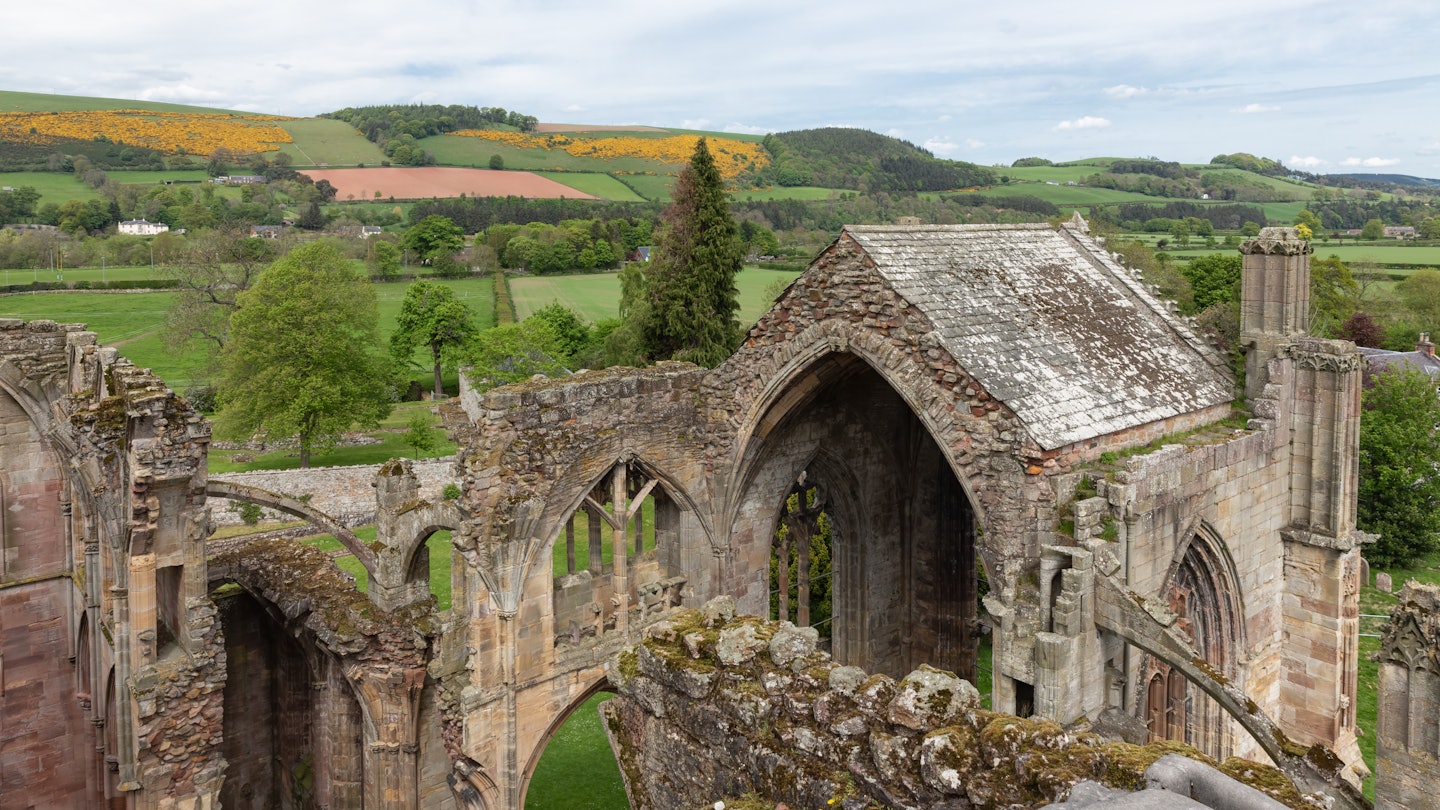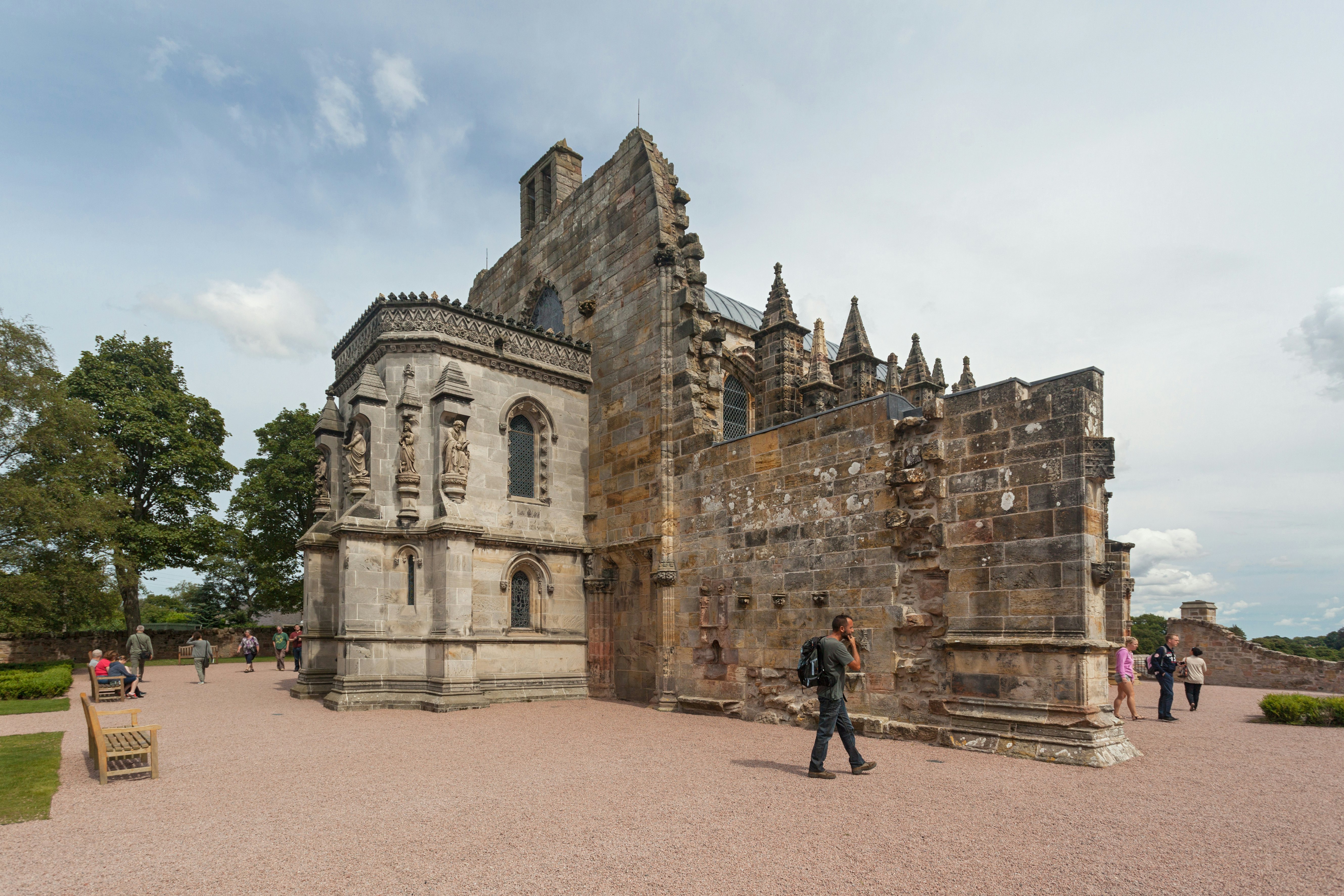
The 30 best countries, cities and regions to visit in 2025
Aug 12, 2022 • 8 min read

Near Sir Walter Scott's estate are the sandstone ruins of Melrose Abbey, reputedly the final resting place of the heart of Robert the Bruce © kruwt / Getty Images / iStockphoto
There’s more to Scotland’s long and storied history than Braveheart. Indeed, Scotland’s favorite movie epic was 5% real events and 95% national pride. But finding the real history of Scotland is easy in this land of lochs and legends.
It’s worth making a distinction between places that were real-life locations for history, and places where history still feels alive. While millions of visitors make a beeline for Edinburgh Castle, a more vivid evocation of Scotland’s past can be found at dozens of less busy historical sites across the country.
From Orkney and Shetland to the rain-lashed glens of the central Highlands, here’s our pick of the best places to commune with Scottish history – and feel a little of that history seep back into the modern-day. You might even walk in the footsteps of your own Scottish ancestors.

Ancient villages pop up all over the Scottish Islands, but Jarlshof in Shetland is something special. Neolithic people lived here. Bronze Age people lived here. Iron Age people lived here. Pictish people lived here. Hell, even Vikings lived here. This sprawl of turf-topped Iron-Age wheelhouses, longhouse ruins and medieval walls near Sumburgh airport is like a cutaway view of more than four millennia of Scottish history.
The lonely setting, tucked onto a grassy spit beyond Shetland’s main airstrip, only adds to the magic of a site that includes ancient dwellings, a ruined broch (drystone tower), the walls of Viking longhouses and the fortified 16th-century home of Robert Stewart, the first Earl of Orkney. Flights into Sumburgh are infrequent, so there’s little apart from birdsong and sea spray to disturb the sense of swirling history.

People of Scottish descent from Arizona to New Zealand can trace the moment their families were wrenched from the bosom of Scotland to the Highland Clearances, which saw more than 70,000 highlanders and islanders forcibly relocated from their homes between 1750 and 1860. After more than a century of cultural cleansing by such villains of history as Patrick Sellar and James Loch, the Crofters’ Holdings Act of 1886 finally put an end to this shameful campaign of depopulation, but the scars of this time cast a long shadow.
Getting closer to the struggle of those affected by the Clearances means hearing the stories of those affected, and those stories are powerfully told at the Strathnaver Museum in Bettyhill. Housed in a lonely, grave-circled chapel, the museum uses historical relics and pictures created by local schoolchildren to deliver personal experiences of the Clearances.
To understand the tough lives that crofters were plucked from, you’ll need to stay in a crofter’s cottage – ideally, an unrestored one. Allt Scheicheachan in Cairngorms National Park fits the bill perfectly; there’s an open fireplace and space for a sleeping bag but not much else, and you’ll have to hike in your own firewood across the glens. Or, for the brave, there’s remote Ben Alder Cottage, set in desolate country on the shores of Loch Ericht and reputedly haunted by the ghosts of its former occupants.
Of all the ancient villages uncovered in Scotland, Skara Brae probably has the most evocative discovery story. This Neolithic village was buried by sand after its inhabitants left suddenly in around 2500 BCE, leaving behind some of their most treasured belongings. The village lay hidden beneath the sands until 1850, when an Atlantic storm peeled back its lid of machair to reveal an immaculate collection of stone-walled homes, complete with indoor latrines, beds, cooking hearths and household possessions.
Within sight of the looming mass of Skaill House, Skara Brae spills out of the grass onto a windswept beach on Mainland, the largest island in the Orkney group. The voices of its vanished inhabitants seem to echo in the swish of the sea and the mournful call of gulls. You can contemplate the life of these urbane early Scots on the clifftop walk to the nearby Broch of Borwick, a time-tumbled Iron Age tower perched like a lookout above the Atlantic breakers.
Prime yourself for the trip by reading Kathleen Fidler’s The Boy with the Bronze Axe, a hypothetical story of the abandonment of Skara Brae.
It has to be acknowledged that many figures from Scottish history became even more heroic thanks to the creative embellishments of Sir Walter Scott, novelist, poet, playwright and historian. The great narrator of Scotland’s national story penned many of his masterworks at Abbotsford, a castle-like country estate on the banks of the River Tweed outside Melrose.
In fact, the author was almost ruined by his elaborate and lavish home. When his publishers went bust in 1825, Scott was forced to put up Abbotsford as collateral for his creditors, spending his twilight years writing his way out of debt. Nearby are the sandstone ruins of Melrose Abbey, reputedly the final resting place of the heart of Robert the Bruce.
For more Scott nostalgia, head to Smailholm Tower, a lonely tower-house on the estate where Scott was sent to convalesce from polio as a child, staying with his storytelling grandmother. You can get even closer to Scott at his mausoleum in romantically ruined Dryburgh Abbey, close to the gorgeous lookout known as Scott’s View, where the writer who forged the Scottish narrative came to gaze out over the Tweed.
You can hardly walk a hundred yards in Orkney without stumbling across another ancient tomb. But some tombs come with more mysteries than others. You’ll enter the Tomb of the Eagles at Isbister on South Ronaldsay on your back, lying prone on a wheeled trolley like an auto-mechanic tomb raider. The bones of some 340 people were found buried in this Neolithic-era chambered tomb, alongside the remains of 14 white-tailed eagles.
Back on Mainland, spectacular Maeshowe is noteworthy not only for its place in Stone Age history, but for the tomb raiders who came after. Assembled from sandstone blocks nearly 5000 years ago, this ancient burial site was raided by treasure-seeking Vikings in the 12th century in a scene worthy of Conan the Barbarian.
These interlopers left their mark in the form of rune graffiti – including a timeless boast about an X-rated liaison between Thorni and Helgi – alongside engravings of dragons and knotted serpents. Around the winter solstice, the setting sun shafts into the main chamber in spooky alignment, adding an extra sparkle of magic.
The woad-wearing Picts are the Scots everyone loves to imagine – fearless and bravehearted and steeped in Celtic mythology. These were the people who drove back the Romans and forged Scotland’s indomitable reputation. The county of Angus on the coast near Dundee is one of the best places to dip into Pictish history, with a string of ancient symbol-carved stones recalling the Picts’ conversion from paganism to Christianity.
Essential stops on the Pictish Trail include St Vigeans Museum near Arbroath, with a collection of intricately carved Celtic crosses and symbol stones, and the village of Forfar, with another fine carved stone collection at the Meffan Museum. While you’re here, stroll across the fields to view St Orland’s Stone, a Pictish cross-slab still standing in its original location, surrounded by empty countryside.
Of all the ancient styles of building found in Scotland, the broch is perhaps the most impressive. These towering, pot-shaped towers were stacked up from dry stones by the Iron Age inhabitants of the highlands and islands. Some stand almost intact today, after more than two millennia of battering from the Scottish weather – a testament to the ingenuity of the people who built them.
The 2000-year-old broch at Mousa in Shetland is just a few stones away from being show-home perfect. Groups of Iron Age families once lived side-by-side in the chimney-like interior, and inside the hollow walls are winding passageways granting access to the upper levels. It’s a wonderfully atmospheric site that was mentioned in two Norse sagas. The setting – on an uninhabited island that doubles as a reserve for storm petrels and other seabirds – only adds to the fairytale.

There’s space on the list for one stop on the coach-tour circuit. Rosslyn Chapel in Midlothian, propelled to global fame by Dan Brown’s The Da Vinci Code, features such a spectacular collection of carved masonry and occult symbology that you won’t mind sharing it with a crowd.
Erected in 1446 by Sir William St Clair, this stone chapel is embellished with everything from vines and angels to depictions of the pagan Green Man, symbols of Freemasonry and the Knights Templar, and carvings of American plants – created centuries before the discovery of America.
Rival legends claim that the vaults beneath the chapel – sealed in 1690 and never reopened – contain the Holy Grail, the head of John the Baptist, or the actual body of Christ. On the other hand, they might just contain some skeletal Scottish monks, but it’s nice to imagine… From Rosslyn Chapel, you can stroll through the woods to Rosslyn Castle, the partly ruined seat of the St Clair clan.
Plan with a local
